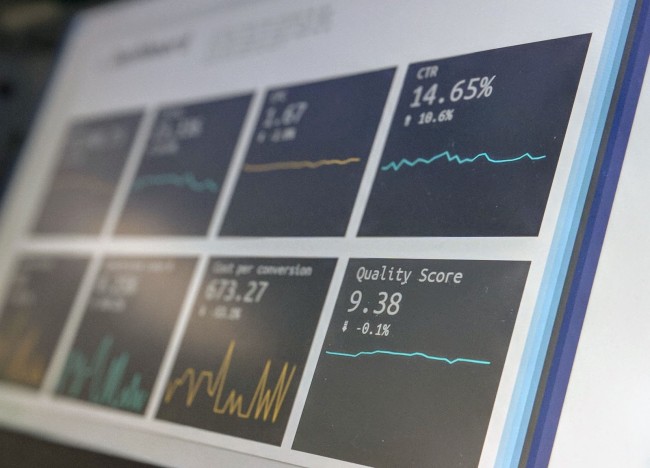
Digital transformation is bringing more and more information, and it needs to be sorted. But it can be like looking for a needle in a haystack when you’re trying to find -and classify- valuable information in a sea of unstructured data.
However, with the advancement of technology, natural language processing and machine learning, there’s a pretty efficient solution for your business: text classification.
It’s no coincidence that 56% of CEOs have recognized that digitizing manual processes, especially when handling important information, has led to increased productivity and better metrics.
Imagine being able to automatically classify your customers’ questions and issues, analyze their opinions about your brand, products, and services and process inquiries on your website. All organized and classified and, best of all, with no need of manual input.
In this post, we’ll navigate with you on how your business can get these benefits and more, and really leverage all the information you collect from your customers every day. Ready? Let’s start diving!
The joy of classifying text with no code or experience
As we previously anticipated, text classification is an automated process of hierarchizing, ordering and analyzing all information arranged in text.
We emphasize ‘automated’. Through a program, with a few clicks you can have at your disposal all the information that would take days or weeks to sort and analyze manually.
There are several no-code text classification platforms and tools that provide a user-friendly and visual interface to configure and train text sorting models.
Some of these platforms also provide you with a variety of templates and examples so that you can use them quickly and smoothly.
This way, it’s possible to upload data, select specific categories or tags, and train a text classification model without writing a single line of code. Once the model is trained, it can be used to automatically classify new texts.
If you don’t have specialized technical equipment or are looking for a quick and easy-to-use solution to classify important information, you’ve found a goldmine. Now let’s look at the practical and concrete applications.

5 challenges you can overcome with text classification
1. E-mails
If you have an active email marketing campaign and you don’t want any response to be left out, with text classification you can:
- Collect: all the responses to the campaign you have active. You can export the responses to a plain text file
- Prepare: this includes removing all unnecessary information like headers and signatures and cleaning the text from special characters and spelling mistakes
- Choose categories or tags: that you want to use to classify the responses. For example, if the campaign is about a specific product, you can use tags like “questions”, “suggestions”, “complaints” or “compliments”
- “Train” a classification model: with a labeled training dataset
- Classification: once the model is trained, it can be used to automatically classify the responses to all campaigns you launch from now on
- Final Analysis: you can see how many responses are questions, how many are complaints, and so on. The idea is that you use this information to optimize the way you interact with your customers and make informed decisions about your product
This way you can prioritize the answers and see which ones you should pay more attention to. This may mean giving the customer what they want in a particular instance, or changing the way you write your email templates.
2. Sentiment analysis
Just like analyzing responses, you must always be able to categorize all interactions with customers, not just emails.
It’s possible to explore, collect and dig deeper into how your customers really feel about the company or products and whether they’re satisfied or dissatisfied.
With digital text classification, you automate the process of analyzing your customers’ feelings and can automatically classify thousands of comments in seconds instead of having to read them one by one.
You can also select the categories or tags you want, such as “positive,” “negative,” and “neutral,” so you can get an accurate overview of all sentiments. This way, you can get an accurate picture of the sentiment.
You’ll know how each product you launch is performing and have a clear idea of what changes need to be made.

3. Sorting of inquiry or complaint tickets
If you allow your customers to open tickets for queries or complaints, you’re asking for a big problem if you don’t have the support to receive and categorize them. These days, there are entire quality control departments that read each ticket individually.
Not anymore.
The idea of classification is that by the time the human eye needs to take action or respond, everything is ready and sorted by relevance. There’s no more accurate digital tool to improve your business than this one.
You can then pre-set categories or tags to classify tickets, such as:
- Technical problems
- Customer service issues
- Returns or exchanges
This way you get an accurate overview of your customers’ problems and can prioritize and solve the most urgent and recurring issues.
If you bring order to the requests that need to be resolved, you can forward them to the appropriate department and take action in the shortest possible time. This impacts customer retention and subsequently productivity, which is an invaluable asset to your brand.
No one is quicker to decide to buy again than someone who has been listened to and helped with their concern.
Besides, this way you’ll not only resolve any action, but also have a comprehensive overview of the changes you need to forward to IT and/or Customer Service for the future.
4. Product ranking
If a product group isn’t well categorized, it can get lost in the sea of offerings you have for your customers. They need to find what they’re looking for in one quick click.
Text classification also allows you to read images. So when you upload images of your products, you can have them sorted by tags, such as:
- Clothing
- Electronics
- Household products
The possibilities are endless. And what’s more, you can divide them by color, size, and even texture. If your customers can filter properly in their search, they’ll be able to better connect with your offer and quickly make a purchase.
With well-specified categories, you can ensure that you turn a list of products into a list of sales.
5. Extraction of key data from documents
The last challenge on our list is possibly why text reading software was born. Although it has been supplanted by the above methods, its main benefit remains.
As for dealing with physical and/or digital documents, you’ll be able to:
- Get feedback on whether a document has a missing fragment (signatures, payment information, ID numbers).
- Categorize them into: Contracts, invoices, promissory bills, accounts receivable, and other labels you deem appropriate.
You can also extract specific information from each document, such as:
- Dates
- Identification data
- Contact information
- Payment data
This way, your office won’t be filled with cluttered documents (physical and in the cloud) and you’ll have access to all the information you need.
Among the aspects to consider when building an ecommerce website, a tool that can read documents and extract valuable information is key.
Organized information is a win-win
As you can see, text classification supports five important areas of your business, so you’ll be able to:
- Get the most out of your active email marketing campaigns: by sorting and categorizing customer responses to automated emails and training a fixed processing system for the future
- Analyze your customers’ emotional responses: Being able to dig deeper into how your customers feel about your product and service is only an asset if you can make the most of the information
- Sort tickets for inquiries or complaints: If you make an effort to receive your customers’ inquiries and give them full attention, you’ll stand out from the competition
- Optimize your product list: Often, it’s not about what you sell, but how you offer it. Text classification gives you the opportunity to make sure that your customers get what they want at the right time
- Extract what you need from physical and digital documents: Whether it’s a signature, a date, or billing information, you can forget about manually reading details forever
This technology is easy to use, but solves the most important challenges of your business. Text classification is a tool that helps you forget about manual processes and focus your energy and that of your employees on what you need: growth.
